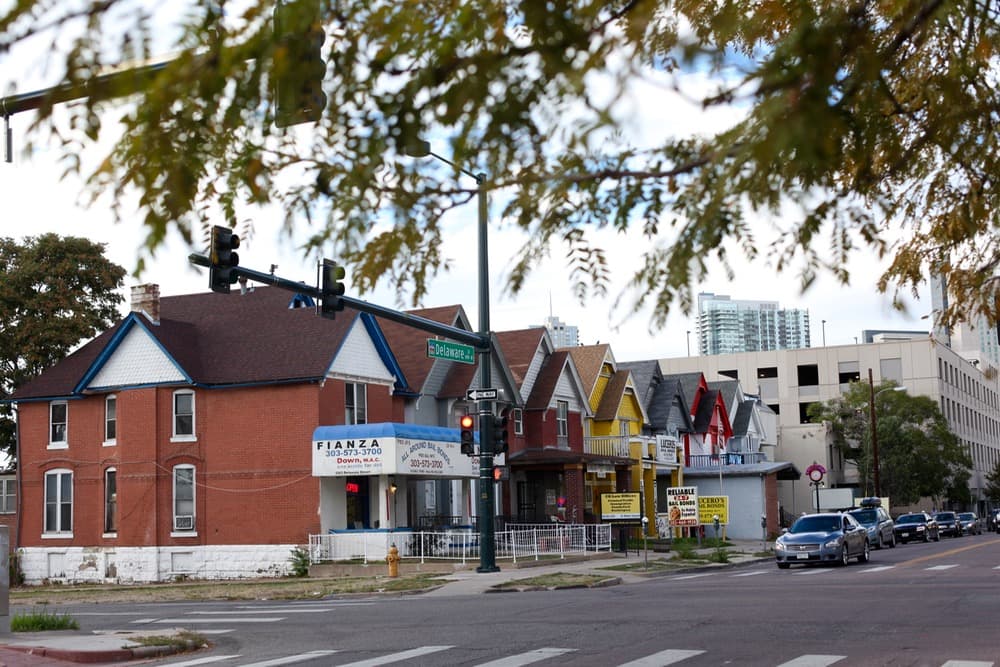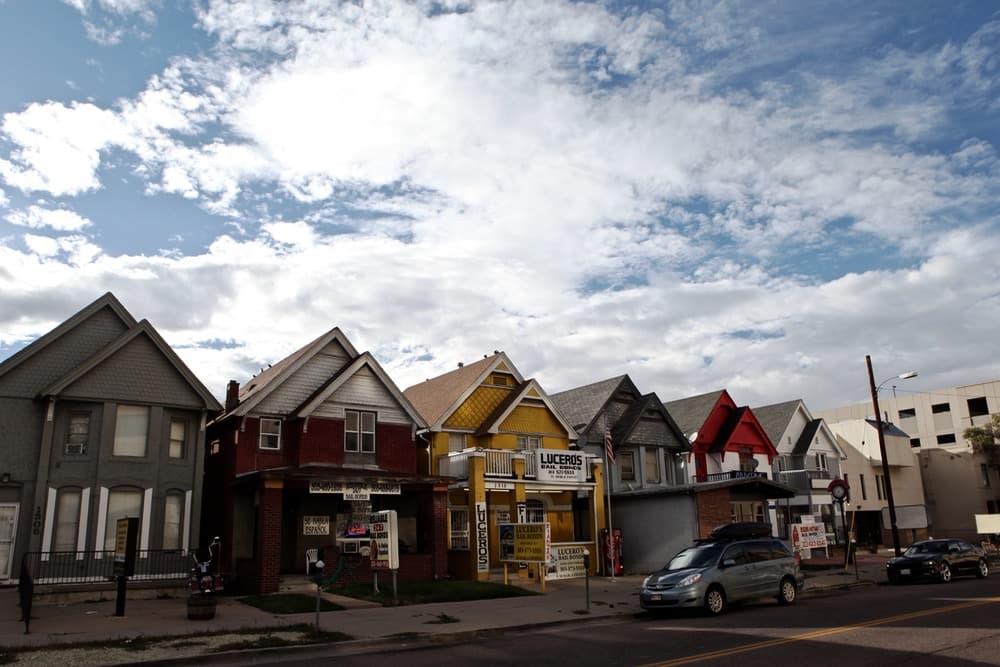
A woman born in 1917 and a bail bondsman named Red have kept one of the most colorful parts of Civic Center alive for decades.
This is Bail Bonds Row, the block of Delaware Street where thousands of people have gotten their temporary ticket out of jail.
You'll notice that two of these old houses are much more colorful than the others. The red one is the very oldest, and it definitely has the best decorations. It is so bright that the buildings next to it literally look like they're stuck in a black-and-white photo.
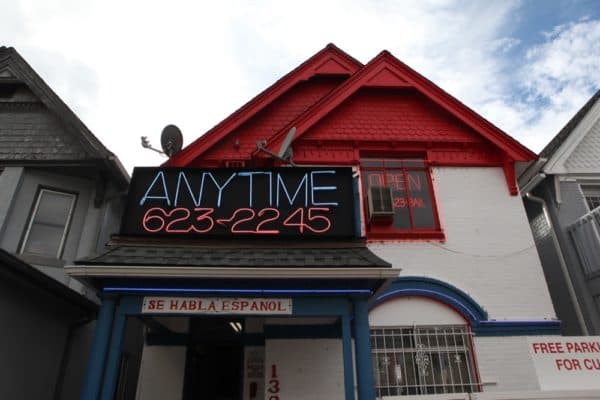
Even better: It's owned by David "Red" Widhalm. Red, as I just learned, is a very savvy 60-something with an injured hand and an un-dyed swoop of red hair.
Over the last couple years, Red has managed to disrupt a developer's block-sized plans while still making $2 million on property sales. He sold off a vacant lot and an ungainly 1970s building on Delaware, but he won't let go of his three triangle-peaked old houses. (He also owns the yellow one and the northerly tan one.)
Basically, his obstinance is a very large part of the reason that Bail Bonds Row is a stretch of history among the modern sculptures and fortresses of Civic Center.
“They won’t be back here with me,” he says of the would-be buyers. “I kept their earnest money.”

See, he likes the place too much. These are some of the last little homes this side of Colfax, he says, and he's not ready to see them demolished.
The story of a strange block:
Red knows the modern story of the place – the O'Neils and Gussie Smith, Henry Vito and Wimberly and Lucero. "I remember this stuff – it's weird," he says.
But you know I want to go further back than that. The row was built between 1890 and 1917, in the decades when the suburban neighborhoods around the new Capitol were just barely filling out.
Circa 1890:

Things had filled in by 1908. Uptown was looking urban. Still, these little rows of houses held on once you got south of Colfax.
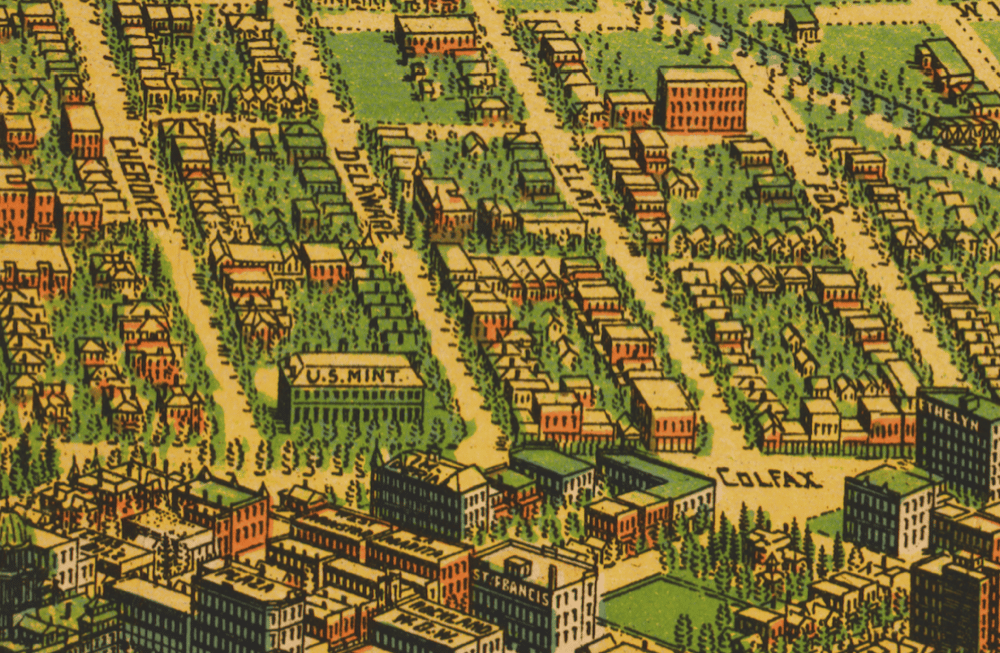
Slowly but surely, the area around the Capitol became Denver's government district. Carnegie Library in the 1900s, the arches of the Voorhies Memorial in the 1910s, the City and County Building in the 30s, the old Denver Central Library in the 1950s and the Denver Art Museum in 1971.
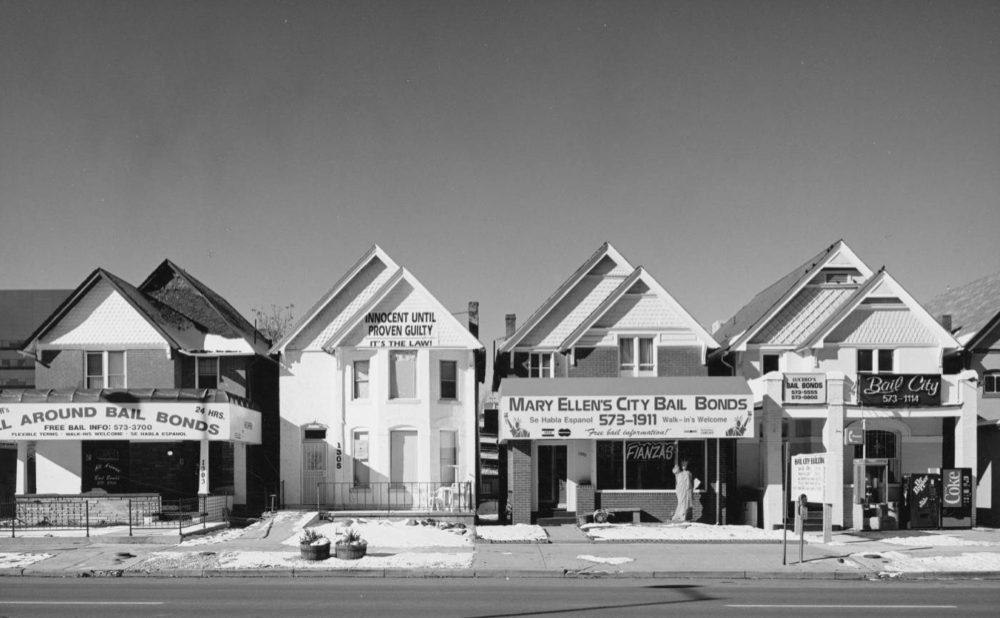
The one we really care about, though, was the old jail.
Before the 1970s, the bonds companies were scattered "all over," Red says. When the new city jail opened in 1977, they came rushing to fill the residential blocks around it.
Al O'Neil was the first. Others followed, until there were ten businesses or more. Red himself came in the 1980s, expanding out of the towing business. He recognized that this was a retail business: You have to catch the customer's eye. He painted one of his buildings yellow and eventually started adding neon touches to the other.
In 1986, the block was marred by murder: Bondswoman Patty O'Neil (Al's wife) was shot dead in her BMW just outside her office, a building that Red owns now. I heard at least one bondsman in another of the offices talking about the place being haunted.
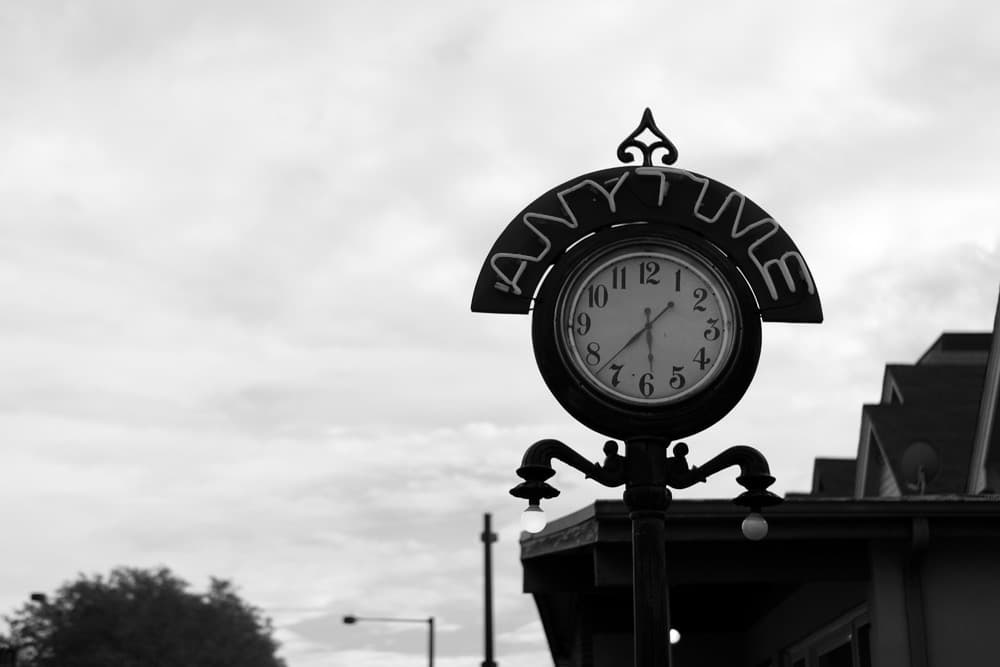
You can't save a place forever.
Business has started to fade for the Delaware Street bonds businesses. Now there are just four, and they're only owned by two people: Red and a woman named Emily Pacheco.
Some of that has come from changes at the jail. First of all, it moved: It now stands north of 14th Avenue. Not quite the same exposure. That period of new civic construction also brought a threat to Bail Bonds Row, according to Red.
"They were going to take all this," he says. "So I started restoring the building next door. I stripped all the wood trim and got it all restored inside over there."
"Beautiful. Gorgeous," his wife interjects. And practical: Red was hoping historic status would ward the government off. (He didn't get the status.)
More recently, he says, the city and county have been letting more people leave jail without a paid bond. No bond, no bondsmen.
Finally, of course, there are the developers.
Most recently, an Austin development company purchased up a handful of bonds offices on 13th Avenue, just adjacent to the row we're talking about here. (We'll call it off-Bonds Row.)
Red and Emily Pacheco both told me that they've heard the plan there is to build a hotel. No word from the purchaser yet.
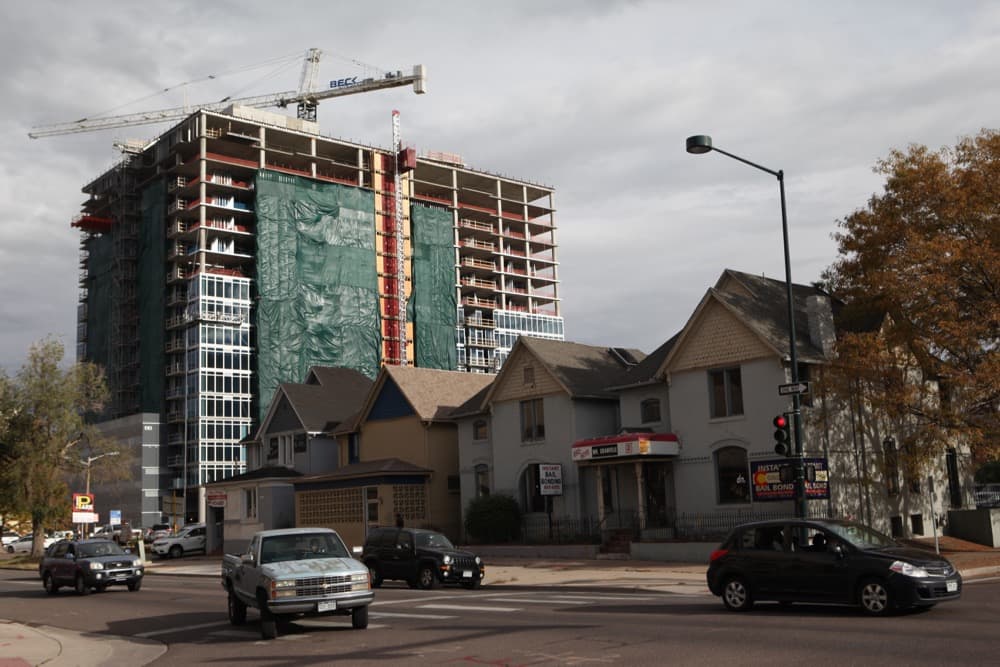
Bail Bonds Row proper, however, should be safe for a little while. Red and his wife kick around the idea of moving into one of their buildings – and there's also one more character in this thing.
Remember that near-centenarian woman from the first sentence? Her name is Juanita Pedotto, and she's reportedly either 98 or 99. She owns two of the other houses on Bail Bonds Row through her LLCs. And she has no intention to sell, as far as any bondsperson on the block knows.
"The landlady wouldn't give up these, and Red wouldn't leave his," says Emily Pecheco, another of the business owners.
I couldn't get in touch with Pedotto myself, but let me leave you with this anecdote from Red.
"I saw her one day and said, 'You know Mrs. Pedotto, you really should sell me that building,'" he recalls.
"What are you going to do with it?" Pedotto replied.
"I said, 'I’m going to knock that piece of crap down.'"
It didn't go over well.
"To this day, she hasn’t spoke to me," Red says. "She grew up in the Depression. She saves everything."
We'll see how long she and Red can keep Bail Bonds Row the way it is today.
